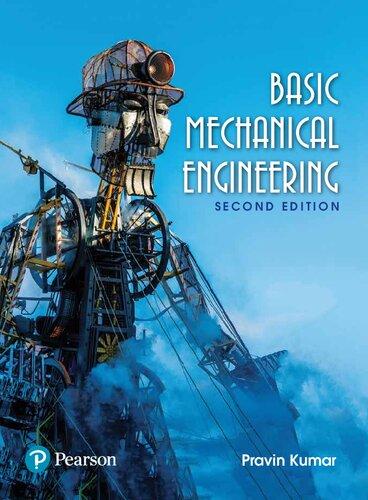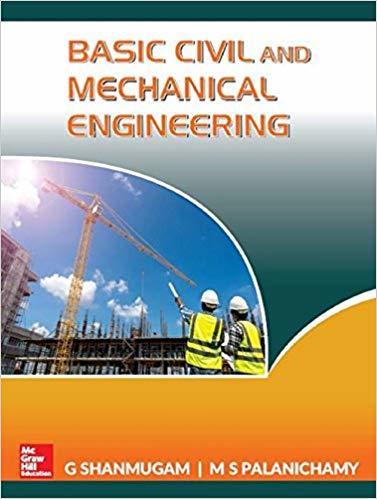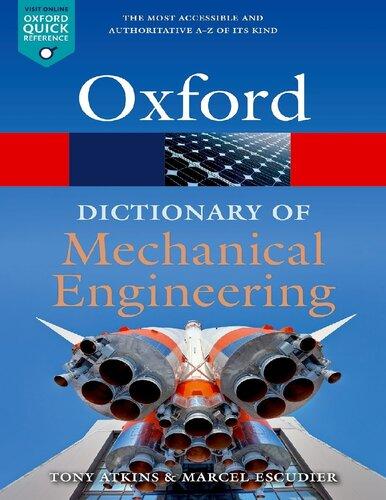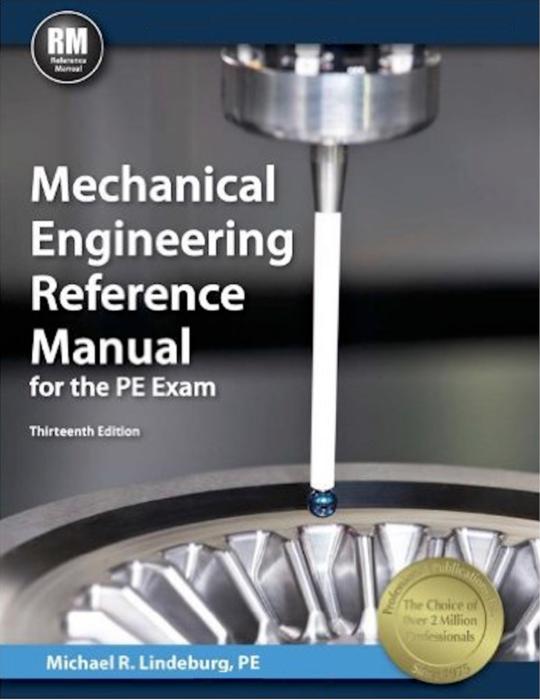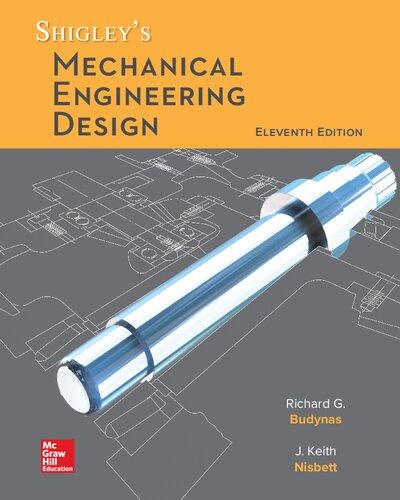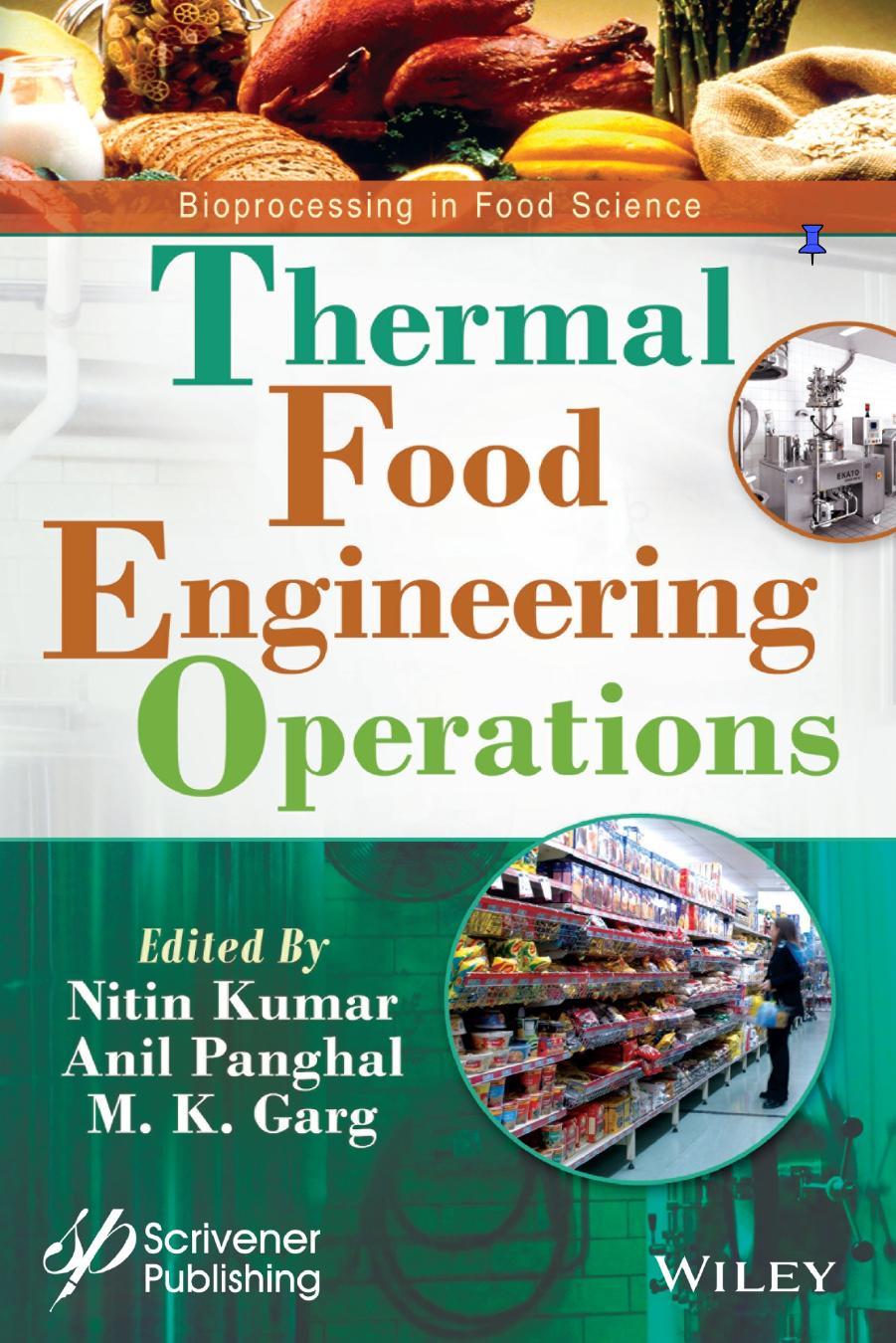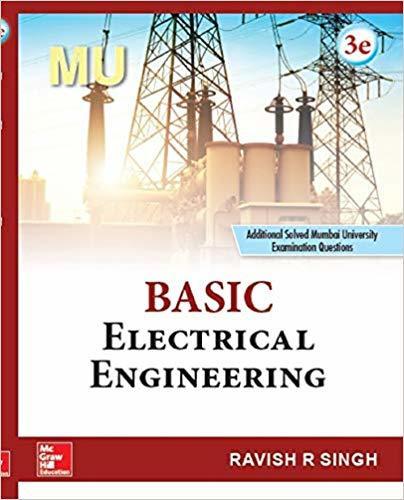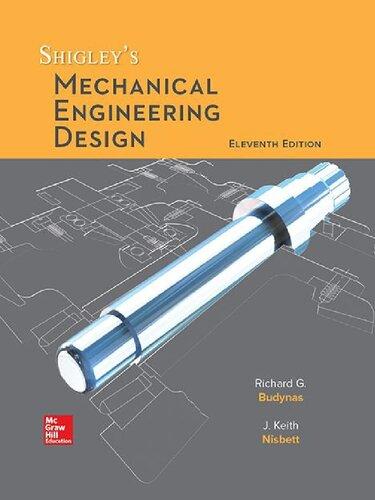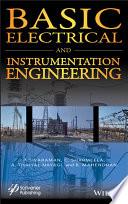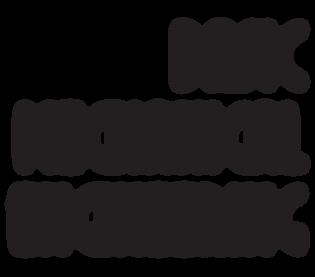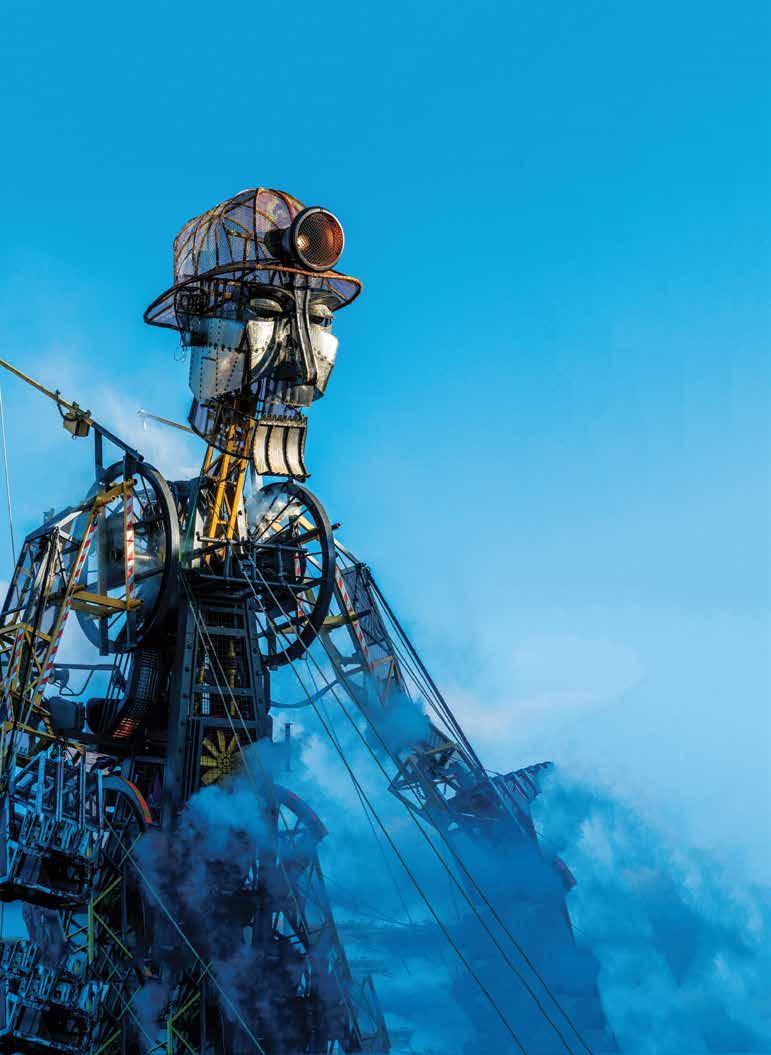Basic Mechanical Engineering
Second Edition
Pravin Kumar
Assistant Professor Department of Mechanical Engineering Delhi Technological University (DTU)
Dedicated to My Wife and Sons
Copyright © 2018 Pearson India Education Services Pvt. Ltd
Copyright © 2013 Dorling Kindersley (India) Pvt. Ltd
Published by Pearson India Education Services Pvt. Ltd, CIN: U72200TN2005PTC057128.
No part of this eBook may be used or reproduced in any manner whatsoever without the publisher’s prior written consent.
This eBook may or may not include all assets that were part of the print version. The publisher reserves the right to remove any material in this eBook at any time.
ISBN 9789386873293
eISBN 9789353063399
Head Office: 15th Floor, Tower-B, World Trade Tower, Plot No. 1, Block-C, Sector-16, Noida 201 301, Uttar Pradesh, India.
Registered Office: 4th Floor, Software Block, Elnet Software City, TS-140, Block 2 & 9, Rajiv Gandhi Salai, Taramani, Chennai 600 113, Tamil Nadu, India. Fax: 080-30461003, Phone: 080-30461060 Website: in.pearson.com, Email: companysecretary.india@pearson.com
This page is intentionally left blank.
Preface to the Second Edition
Preface to the First Edition
About the Author
Acknowledgements
1 ConCepts of thermodynamiCs and properties of Gases 1
1.1 Introduction 1
1.2 Important Terminologies Used in Thermodynamics 2
1.3 Specific Heat Capacity 8
1.3.1 Specific Heat at Constant Volume (C v ) 8
1.3.2 Specific Heat at Constant Pressure (CP ) 8
1.3.3 Relationship Between C p and C v 9
1.4 The First Law of Ther modynamics 10
1.4.1 Mechanical Equivalent of Heat 10
1.4.2 Internal Energy 11
1.4.3 Physical Interpretation of Internal Energy 12
1.4.4 Energy Transfer Across the System Boundary (Heat and Work) 13
1.4.5 Non-flow Processes 14
1.4.6 Application of First Law of Thermodynamics in Steady Flow Process and Variable Flow Process 24
1.4.7 Limitations of First Law of Thermodynamics 28
1.5 The Second Law of Ther modynamics 29
1.5.1 Kelvin–Planck Statement 29
1.5.2 Clausius Statement 29
1.5.3 Equivalence of Kelvin–Planck and Clausius Statement 30
1.6 Reversible and Irreversible Processes 32
1.7 The Car not Cycle 32
1.8 The Clausius Inequality 34
1.9 Entropy and Entropy Generation 34
1.9.1 Entropy 34
1.9.2 Entropy Generation 35
1.9.3 Entropy Balance 35
1.9.4 Evaluation of Entropy Change 36
1.10 Third Law of Ther modynamics 41
1.11 Gas Laws 41
1.11.1 Boyle’s Law 42
1.11.2 Charles’s Law 43
1.11.3 Gay–Lussac’s Law 43
1.11.4 The Combined Gas Law 44
1.11.5 Gas Constant 45
Points to Remember 46
Important Formulae 48
Multiple-choice Questions 50
Fill in the Blanks 52
Review Questions 52
Exercise Problems 53
2 fuels and Combustion
2.1 Introduction 55
2.2 Coal 56
2.2.1 Analysis of Coal 57
2.2.2 Advantages of Solid Fuels over the Liquid Fuels 58
2.3 Liquid Fuels 58
2.3.1 Petroleum 58
2.3.2 Kerosene 59
2.3.3 Diesel 59
2.3.4 Gasoline 60
2.3.5 Calorific Value of Liquid Fuels 60
2.3.6 Major Contents of Liquid Fuels 60
2.3.7 Advantages and Disadvantages of Liquid Fuels over Solid Fuels 61
2.4 Gaseous Fuels 62
2.4.1 Liquefied Petroleum Gas (LPG) 62
2.4.2 Compressed Natural Gas (CNG) 62
2.4.3 Advantages and Disadvantages of Gaseous Fuels over the Solid Fuels 63
2.5 Biofuels 63
2.5.1 Bioalcohols 63
2.5.2 Biodiesel 64
2.5.3 Green Diesel 64
2.5.4 Vegetable Oil 65
2.5.5 Biogas 65
2.5.6 Bioethers 65
2.5.7 Syngas 65
2.5.8 Solid Biofuels 65
2.5.9 Scope of Second-generation Biofuels 66
2.6 Combustion 66
2.6.1 Principle of Combustion 66
2.7 Deter mination of Calorific Value of Fuel Using Bomb Calorimeter 67 Points to Remember 69
Important Formulae 70
Review Questions 72
Exercise Problems 72
3 power plant enGineerinG and sourCes of enerGy 73
3.1 Introduction 73
3.2 Prime Movers 73
3.2.1 Historical Development of Prime Movers 74
3.3 Power Plant Engineering 74
3.3.1 Thermal Power Plant 75
3.3.2 Hydroelectric Power Plant 76
3.3.3 Nuclear Power Plant 76
3.3.4 Diesel Power Plant 80
3.3.5 Tidal Power Plant 82
3.3.6 The Geothermal Power Plant 85
3.3.7 Windmill 87
3.4 Sources of Energy 89
3.4.1 Renewable Energy 89
3.4.2 Non-renewable Energy 91
Points to Remember 93 Multiple Choice Questions 94 Answers 95 Review Questions 95
4 properties of steam and steam Generators 97
4.1 Introduction 97
4.2 For mation of Steam at Constant Pressure 97
4.3 Throttling Calorimeter 108
4.4 Separating and Throttling Calorimeter 110
4.5 Steam Table 111
4.6 Mollier Diagram or h–S Chart 111
4.7 Steam Generators/Boilers 112
4.7.1 Classification of Boilers 112
4.7.2 Requirements of a Good Boiler 113
4.7.3 Cochran Boiler 114
4.7.4 Babcock and Wilcox Boiler 115
4.7.5 Locomotive Boiler 116
4.7.6 Lancashire Boiler 117
4.7.7 Cornish Boiler 118
4.8 Boiler Mountings 118
4.8.1 Safety Valves 118
4.8.2 High Steam Low Water Safety Valve 120
4.8.3 Water Level Indicator 121
4.8.4 Pressure Gauge 122
4.8.5 Feed Check Valve 122
4.8.6 Steam Stop Valve 123
4.8.7 Blow-off Cock 123
4.8.8 Fusible Plug 124
4.8.9 Manhole 125
4.9 Boiler Accessories 125
4.9.1 Economizer 125
4.9.2 Air Preheater 126
4.9.3 Superheater 127
4.9.4 Feed Pump 127
4.9.5 Injector 128
4.9.6 Steam Trap 128
4.9.7 Steam Separator 128
4.9.8 Pressure Reducing Valve 129
4.10 Performance of Boilers 129
Points to Remember 133 Important Formulae 135 Multiple-choice Questions 135 Fill in the Blanks 137 Review Questions 138 Exercise Problems 138 5 steam and Gas turbines
5.1 Introduction 141
5.2 Steam Engines and their Working Principles 141
5.2.1 Modified Rankine Cycle: Theoretical Indicator Diagram 143
5.2.2 Rankine Cycle 145
5.3 Steam Turbines 147
5.3.1 Classification of Steam Turbine 147
5.3.2 Compounding of Impulse Turbine 153
5.3.3 Impulses-reaction Turbine (Reaction Turbine) 157
5.3.4 Differences Between Impulse and Reaction Turbines 164
5.3.5 Losses in Steam Turbines 164
5.3.6 Governing of Steam Turbines 164
5.4 Gas Turbines 165
5.4.1 Classification of Gas Turbine 165
5.4.2 Applications of Gas Turbines 165
5.4.3 Gas Turbine Cycle with Regenerator 175
5.4.4 Gas Turbine Cycle with Reheating and Intercooling 175
Points to Remember 176 Important Formulae 177
Objective Questions 178
Fill in the Blanks 179
Review Questions 180
Exercise Problems 181
6 internal Combustion enGines
6.1 Introduction 182
6.2 Classification of I.C. Engines 183
6.3 Basic Structure of I.C. Engines 185
6.3.1 Nomenclature 187
6.4 Working Principle of I.C. Engines 188
6.4.1 Four-stroke Spark Ignition Engine 188
6.4.2 Four-stroke Compression Ignition Engine 190
6.4.3 Two-stroke Spark Ignition Engine 192
6.4.4 Two-stroke C.I. Engine 194
6.4.5 Comparison Between Four-stroke and Two-stroke Engines 196
6.4.6 Comparison Between S.I. and C.I. Engines 197
6.4.7 Comparison Between Otto Cycle and Diesel Cycle 197
6.5 Valve Timing Diagrams 197
6.5.1 Valve Timing Diagram for Four-stroke S.I. Engines 197
6.5.2 Port Timing Diagram for Two-stroke S.I. Engines 198
6.5.3 Valve Timing Diagram for Four-stroke C.I. Engine 199
6.6 Otto Cycle 200
6.7 Diesel Cycle 203
6.8 Dual Cycle 206
6.9 Engine Performance Parameters 209
6.10 Emission Control 212
6.10.1 Types of Emissions 212
6.10.2 Emission Control Techniques 212
6.11 Some Recent Developments in Automotive Technology 214
6.11.1 Multi-point Fuel Injection 214
6.11.2 Common Rail Direct Injection (CRDI) 216
6.11.3 Hybrid Engine 217
Points to Remember 218
Important Formulae 219
Multiple-choice Questions 219
Fill in the Blanks 220
Review Questions 221
Exercise Problems 222
7 heat transfer
7.1 Introduction 225
7.1.1 Conduction 225
7.1.2 Convection 227
7.1.3 Radiation 228
7.1.4 Combined Heat Transfer 229
Points to Remember 235
Important Formulae 236
Multiple-choice Questions 237
Review Questions 238
Exercise Problems 238
8 refriGeration and air ConditioninG
8.1 Introduction 239
8.2 Refrigerator and Heat Pump 240
8.3 Components of Refrigeration System 241
8.3.1 Evaporator 241
8.3.2 Compressor 241
8.3.3 Condenser 242
8.3.4 Expansion Valve 242
8.4 Types of Refrigeration Systems 242
8.4.1 Air-refrigeration System 242
8.4.2 Vapour Compression Refrigeration System 247
8.4.3 Absorption Refrigeration Cycle 250
8.5 Type of Refrigerants 250
8.6 Domestic Refrigerator 251
8.7 Psychrometry 253
8.8 Psychrometric Processes 254
8.8.1 Psychrometric Chart 254
8.9 Air Washers 264
8.10 Human Comfort Conditions 264
8.11 Room Air Conditioner 265
8.11.1 Window Air Conditioner 265
8.11.2 Split Air Conditioner 266
8.11.3 Difference Between Split and Window ACs 267
Points to Remember 268
Important Formulae 268
Multiple-choice Questions 269
Review Questions 271
Exercise Problems 272
9 fluid meChaniCs and hydrauliC maChines 273
FLUID MECHANICS 273
9.1 Introduction 273
9.2 Properties of Fluids 273
9.2.1 Density 274
9.2.2 Viscosity 274
9.2.3 Newtonian and Non-Newtonian Fluids 276
9.2.4 Surface Tension 277
9.2.5 Capillarity 278
9.2.6 Pressure Variation with Depth 280
9.3 Ber noulli’s Equation 281
9.4 Types of Flow 284
HYDRAULIC MACHINES 284
9.5 Introduction 284
9.6 Hydraulic Turbines 285
9.6.1 Classification of Hydraulic Turbines 285
9.7 Terminology Used in Turbine 286
9.8 Pelton Turbine 287
9.8.1 Main Components of Pelton Turbine 287
9.8.2 Selection of Speed of Pelton Turbine 288
9.8.3 Velocity Triangle for Pelton Turbine 289
9.9 Francis Turbine 293
9.9.1 Main Components of Francis Turbine 293
9.9.2 Different Shapes of Draft Tubes 295
9.10 Kaplan Turbine 299
9.10.1 Velocity Triangle for Kaplan Turbine 300
9.11 Gover ning of Turbines 304
9.12 Pumps 304
9.13 Centrifugal Pump 304
9.13.1 Main Components of Centrifugal Pump 304
9.13.2 Velocity Triangle for Centrifugal Pump 306
9.13.3 Various Heads and Efficiencies of Centrifugal Pumps 307
9.13.4 Some Important Points Related to Centrifugal Pump 307
9.14 Reciprocating Pump 311
9.14.1 Air Vessels 315
9.15 Gear Pump 317
9.16 Vane Pump 318
9.17 Lobe Pump 318
9.18 Screw Pump 319
9.18.1 Two-screw, Low-pitch, Screw Pump 319
9.18.2 Three-screw, High-pitch, Screw Pump 319
Points to Remember 321
Important Formulae 322
Multiple-choice Questions 325
Review Questions 327
Exercise Problems 328
10 air Compressors
10.1 Introduction 330
10.2 Classification of Compressors 330
10.3 Reciprocating Compressors 331
10.3.1 Polytropic Compression 333
10.3.2 Isothermal Compression 334
10.3.3 Effect of Clearance on Work Done 334
10.3.4 Volumetric Efficiency 335
10.3.5 Multistage Compression 337
10.3.6 Work Done in Multistage Compression 337
10.4 Rotar y compressors 342
10.4.1 Fixed Vane Type Compressors 342
10.4.2 Multiple Vane Type Rotary Compressors 343
10.5 Centrifugal Compressors 344
10.6 Axial Flow Compressors 345
Points to Remember 346 Important Formulae 347
Multiple-choice Questions 348
Fill in the Blanks 350
Review Questions 350
Exercise Problems 351
11 Centroid and moment of inertia 352
11.1 Introduction 352
11.2 Deter mination of Position of Centroid of Plane
Geometric Figures 352
11.2.1 Center of Gravity, Center of Mass, and Centroid of an Irregular Shape 352
11.2.2 Centroid of I-section 354
11.2.3 Centroid of U-section 354
11.2.4 Centroid of H-section 355
11.2.5 Centroid of L-section 355
11.2.6 Centroid of T-section 356
11.2.7 Centroid of C-section 356
11.2.8 Centroid of Circular Arc 357
11.2.9 Centroid of Semicircular-section of a Disc 357
11.2.10 Centroid of a Sector of a Circular Disc 358
11.2.11 Centroid of a Parabola 358
11.2.12 Centroid of a Triangle 359
11.3 Second Moment of Area 360
11.3.1 Radius of Gyration 360
11.3.2 Theorem of Perpendicular Axis 361
11.3.3 Theorem of Parallel Axis 361
11.3.4 Moment of Inertia from First Principle 361
11.3.5 Moment of Inertia of Some Composite Sections 363
11.4 Center of Gravity of Solids 363
11.5 Mass Moment of Inertia 363
11.5.1 Mass Moment of Inertia of a Circular Ring 363
11.5.2 Mass Moment of Inertia of a Circular Disc 364
11.5.3 Mass Moment of Inertia of a Hollow Cylinder 365
11.5.4 Mass Moment of Inertia of Sphere 365
11.5.5 Mass Moment of Inertia of a Circular Cone 366
Points to Remember 368
List of Mass Moment of Inertia 368 List of Area Moment of Inertia 371 Important Formulae 373
Multiple-choice Questions 374
Review Questions 375
Exercise Problems 376
12 stress and strain
12.1 Introduction 377
12.2 Hooke’s Law 379
12.3 Stress–Strain Diagram 379
12.4 Extension in Varying Cross-section or Taper Rod 383
12.5 Stress and Strain in Varying Cross-section Bar of Uniform Strength 385
12.6 Stress and Strain in Compound Bar 386
12.7 Stress and Strain in an Assembly of Tube and Bolt 387
12.8 Stress and Strain in Composite Bar 392
12.9 Temperature Stress 393
377
12.10 Stress and Strain Due to Suddenly Applied Load 394
12.11 Stress and Strain for Impact Load 395
12.12 Relation Between Stress and Volumetric Strain 396
12.13 Relation Between Modulus of Elasticity and Bulk Modulus 397
12.14 Relation Between Modulus of Elasticity and Modulus of Rigidity 397
Points to Remember 401 Important Formulae 402
Multiple-choice Questions 403
Review Questions 404
Exercise Problems 405
13 maChine elements 406
SPRINGS 406
13.1 Introduction 406
13.2 Types of Springs 407
13.3 Materials used for Springs 409
13.4 Shear Stress in Helical Springs 410
13.5 Deflection in Helical Spring 412
13.6 Series and Parallel Connection of Helical Springs 414
CAM AND FOLLOWER 416
13.7 Introduction 416
13.8 Types of Cams 417
13.9 Types of Followers 418
BUSHING AND ROLLER BEARING 420
13.10 Introduction 420
13.11 Bushing Materials 420
13.12 Bearings 421
13.12.1 Sliding Contact or Bush Bearings 421
13.12.2 Rolling Contact Bearings 422
13.13 Properties of Bearing Materials 426
13.14 Bearing Materials 427
Points to Remember 427 Important Formulae 427
Multiple-choice Questions 428
Review Questions 430
Exercise Problems 430
14 flywheel and Governors
FLYWHEEL 431
14.1 Introduction 431
14.2 Mass Moment of Inertia of Flywheel 432
GOVERNORS 434
14.3 Introduction 434
14.4 Terminology Used in Governors 435
14.5 Classification of Gover nors 436
14.6 Gravity Controlled Centrifugal Governors 436
14.6.1 Watt Governor 436
14.6.2 Porter Governor 437
14.6.3 Proell Governor 440
14.7 Spring Controlled Centrifugal Governor 442
14.7.1 Hartnell Governor 442
14.7.2 Willson–Hartnell Governor 445
14.7.3 Hartung Governor 447
14.8 Sensitiveness of Gover nors 448
14.9 Gover ning of I.C. Engines 449
14.9.1 Qualitative Governing 449
14.9.2 Quantitative Governing 449
14.9.3 Hit and Miss Governing 449
14.10 Differences Between Flywheel and Governors 450
Points to Remember 450 Important Formulae 451 Multiple-choice Questions 452 Review Questions 453 Exercise Problems 454
15 power transmission deviCes
15.1 Introduction 455
15.2 Belt Drive 455
15.2.1 Type of Belt Cross-sections 456
15.2.2 Velocity Ratio 457
15.2.3 Creep 458
15.2.4 Flat Belt Drives 458
15.2.5 Ratio of Tensions 463
15.2.6 Effect of Centrifugal Force on Belt Drive 465
15.3 Rope Drive 468
15.4 Chain Drive 469
15.4.1 Chain Length 469
15.4.2 Types of Chain 471
15.5 Gear Drive 472
15.5.1 Gear Terminology 472
15.5.2 Law of Gearing 474
15.5.3 Forms of Teeth 475
15.6 Classification of Gears 476
15.6.1 Parallel Shafts 476
15.6.2 Intersecting Shaft 477
Points to Remember 479
Important Formulae 480
Multiple-choice Questions 481
Fill in the Blanks 482
Review Questions 483
Exercise Problems 483
16 CouplinGs, ClutChes, and brakes
COUPLINGS 485
16.1 Introduction 485
16.2 Rigid Coupling 485
16.3 Flexible Bushed Coupling 486
16.4 Universal Joint 487
CLUTCHES 488
16.5 Introduction 488
16.6 Single Plate Clutch 488
16.7 Multi-plate Disc Clutch 493
16.8 Cone Clutch 494
16.9 Centrifugal Clutch 496
BRAKES 497
16.10 Introduction 497
16.10.1 Block or Shoe Brake 497
16.10.2 Band Brake 500
16.10.3 Band and Block Brake 503
16.10.4 Internal Expanding Shoe Brake 504
Points to Remember 507
Important Formulae 507
Multiple-choice Questions 508
Review Questions 509
Exercise Problems 510
17 enGineerinG materials
17.1 Introduction 511
17.2 Mechanical Properties of Engineering Materials 512
17.3 Mechanical Testing of Engineering Materials 513
17.3.1 Tensile Test 513
17.3.2 Hardness 515
17.4 Impact Test 518
17.5 Classification of Engineering Materials 519
17.5.1 Ferrous Metals 519
17.5.2 Non-ferrous Metals 522
17.5.3 Plastics 523
17.5.4 Abrasive Materials 524
17.5.5 Ceramics 524
17.5.6 Silica 525
17.5.7 Glasses 525
Points to Remember 525
Multiple-choice Questions 526
Review Questions 528
18 meChaniCal measurement
18.1 Introduction 529
18.2 Temperature Measurement 530
18.2.1 Thermocouple 530
18.2.2 Resistance Temperature Devices (RTD) 530
18.2.3 Infrared Temperature Measurement Devices 530
18.2.4 Bimetallic Temperature Measurement Devices 530
18.2.5 Fluid-expansion Temperature Measurement Devices 531
18.2.6 Change-of-state Temperature Measurement Devices 531
18.3 Pressure Measurement 531
18.3.1 Manometers 532
18.3.2 Bourdon Tube Pressure Gauge 533
18.3.3 Low Pressure Measurement 534
18.4 Velocity Measurement 535
18.4.1 Velocity Measurement of Fluid with Pitot Tube 535
18.4.2 Hot Wire Anemometer 536
18.5 Flow Measurement 536
18.5.1 Flow Measurement Through Velocity of Fluid Over Known Area 536
18.5.2 Orificemeter 538
18.5.3 Rotameter 538
529
18.6 Strain Measurement 539
18.6.1 Strain Gauge 540
18.7 Force Measurement 541
18.7.1 Cantilever Beam 542
18.8 Torque Measurement 543
18.8.1 Prony Brake Dynamometer 543
18.8.2 Rope Brake Dynamometer 543
18.8.3 Torque Measurement by Pointer and Scale 544
18.9 Measurement Errors 545
18.10 Uncertainties of Measurement 546
18.11 Vernier calipers 546
18.12 Micrometer or Screw Gauge 547
18.12.1 Measurement Procedure 549
18.13 Dial Gauge or Dial Indicator 549
18.14 Slip Gauges 549
18.14.1 Classification of Slip Gauges 550
18.14.2 Applications of Slip Gauge 551
18.15 Sine Bar 551
18.16 Combination Set 552
Points to Remember 553
Multiple-choice Questions 554 Review Questions 555
19 metal CuttinG and maChine tools
19.1 Introduction 556
19.2 Mechanism of Metal Cutting 557
19.2.1 Types of Chip Formation 557
19.3 Orthogonal and Oblique Metal Cutting 558
19.4 Lathe 559
19.4.1 Classification of Lathes 559
19.4.2 Specifications of Lathe 560
19.4.3 Constructional Detail of Lathe 560
19.4.4 Power Transmission System in Lathe Machine 562
19.4.5 Cutting Tools Used in Lathe 564
19.4.6 Types of Operations on Lathe Machine 564
19.5 Shaper, Slotter, and Planer 569
19.5.1 Shaping and Planing 569
19.5.2 Constructional Detail of Shaper 570
19.5.3 Slotter Machine 571
19.5.4 Crank and Slotted Arm Quick Return Mechanism 571
19.5.5 Specification of Shaper 572
19.5.6 Constructional Detail of Planer 573
19.5.7 Fast and Loose Pulleys Driving Mechanism of Planer 573
19.5.8 Specifications of Planer 575
19.5.9 Difference Between Shaper and Planer 575
19.6 Drilling Machine 575
19.6.1 Driving Mechanism in Drilling Machine 575
19.6.2 Drill Bit 576
19.6.3 Specifications of a Drilling Machine 577
19.6.4 Operations Performed on Drilling Machine 577
19.6.5 Advanced Types of Drilling Machine 579
19.7 Boring 580
19.7.1 Specification of Boring Machines 580
19.8 Milling Machines 581
19.8.1 Constructional Detail of Milling Machine 581
19.8.2 Basic Milling Operations 582
19.8.3 Nomenclature of Milling Cutter 585
19.9 Grinding Machines 586
19.9.1 Grinding Wheel Specification 586
19.9.2 Methods of Grindings 588
19.9.3 Cylindrical Grinders 589
19.9.4 Plain Cylindrical Grinders 590
19.9.5 Plain Surface Grinders 590
19.9.6 Universal Cylindrical Grinders 591
19.9.7 Centerless Grinders 591
Points to Remember 593
Multiple-choice Questions 594 Fill in the Blanks 595 Review Questions 596
20 CastinG and weldinG
CASTING 597
20.1 Introduction 597
20.2 Classification of Casting Process 598
20.3 Sand Casting 598
20.3.1 Steps in Sand Casting 599
20.3.2 Pattern Making 600
20.3.3 Types of Pattern 601
20.3.4 Mould Making 605
20.3.5 Properties of Mouldings Sands 607
20.3.6 Hand Tools Used in Moulding 608
20.3.7 Moulding Procedure 609
20.3.8 Gating System 610
20.3.9 Chills 611
20.3.10 Chaplets 612
20.3.11 Cores 612
20.3.12 Sand Testing 614
20.4 Special Casting Methods 615
20.4.1 Gravity/Permanent Mould Casting 615
20.4.2 Die Casting 615
20.4.3 Centrifugal Casting 617
20.5 Casting Defects 619
20.6 Surface Cleaning of the Casting 621
WELDING 622
20.7 Introduction 622
20.7.1 Definition of Welding 622
20.8 Classification of Welding Process 624
20.9 Gas Welding 625
20.9.1 Oxyacetylene Welding 625
20.9.2 Gas Welding Methods 628
20.10 Electric Arc Welding 629
20.10.1 Functions of Electrode Coatings 631
20.10.2 Ingredients of Electrode Coating 632
20.10.3 Selection of Electrodes 632
20.10.4 Specifications for Electrodes 632
20.11 Types of Electric Arc Welding 633
20.11.1 Carbon Arc Welding 633
20.11.2 Shielded Metal Arc Welding (SMAW) 633
20.11.3 Metal Inert Gas Arc Welding (MIG)/Gas Metal Arc Welding (GMAW) 634
20.11.4 Tungsten Inert Gas Arc Welding (TIG)/Gas Tungsten Arc Welding (GTAW) 635
20.11.5 Submerged Arc Welding (SAW) 636
20.11.6 Electroslag Welding 637
20.11.7 Atomic Hydrogen Welding 638
20.11.8 Plasma Arc Welding 639
20.12 Resistance Welding 640
20.12.1 Resistance Spot Welding 641
20.12.2 Resistance Seam Welding 642
20.12.3 Resistance Projection Welding 642
20.12.4 Flash Welding 643
20.12.5 Percussion Welding 644
20.12.6 Resistance Butt Welding 645
20.13 Thermit Welding 645
20.14 Welding Allied Processes 645
20.14.1 Soldering 645
20.14.2 Brazing 646
20.14.3 Braze Welding 647
20.15 Welding Defects 648
Points to Remember 649
Multiple-choice Questions 650 Fill in the Blanks 653
Review Questions 654
21 meChaniCal workinG of metals, sheet metal work, powder metallurGy, and smithy
MECHANICAL WORKING PROCESS 655
21.1 Introduction 655
21.1.1 Advantages of Mechanical Working Process Over Other Manufacturing Processes 656
21.2 Rolling 657
21.2.1 Terminology 657
21.2.2 Types of Rolling Mills 658
21.2.3 Rolling Defects 659
21.3 Forging 660
21.3.1 Different Types of Forging 660
21.4 Extrusion 663
21.4.1 Hot Extrusion 664
21.4.2 Cold Extrusion 664
21.4.3 Impact Extrusion 664
21.5 Wire Drawing 665
21.6 Bar Drawing 666
21.7 Tube Drawing 666
21.8 High Energy Rate For ming 667
21.8.1 Explosive Forming 667
21.8.2 Electrohydraulic Forming 668
21.8.3 Electromagnetic Forming 668
21.9 Thread Rolling 668
21.10 Piercing or Seamless Tubing 669
21.11 Some Other For ming Processes 670
SHEET METAL PROCESS 671
21.12 Introduction 671
21.13 Sheet Metal Joints 671
21.14 Materials Used for Sheet Metal 672
21.15 Hand Tools Used in Sheet Metal Work 673
21.16 Sheet Metal Operations 677
21.16.1 Shearing 677
21.16.2 Bending 678
21.16.3 Stretch Forming 678
21.16.4 Deep Drawing 678
21.16.5 Hot Spinning 680
POWDER METALLURGY 681
21.17 Introduction 681
21.18 Manufacturing of Metal Powders 681
21.18.1 Characteristics of Metal Powder 681
21.18.2 Methods of Production 681
21.19 Blending/Mixing of the Metal Powders 682
21.20 Compacting 683
21.21 Sintering 684
21.22 Finishing Operations 684
21.23 Advantages of Powder Metallurgy 684
21.24 Limitations of Powder Metallurgy 685
21.25 Applications of Powder Metallurgy 685
SMITHY 685
21.26 Introduction 685
21.27 Major Tools Used in Smithy Shop 686
21.27.1 Smith’s Forge or Hearth 686
21.27.2 Anvil 686
21.27.3 Hammer 687
21.27.4 Swage Block 688
21.27.5 Tongs 689
21.27.6 Chisels 689
21.27.7 Punches 690
21.27.8 Flatters 690
21.27.9 Set Hammer 690
21.27.10 Fullers 690
21.27.11 Swages 691
Points to Remember 691
Multiple-choice Questions 693
Fill in the Blanks 693
Review Questions 694
22 manufaCturinG systems: nC, CnC, dnC, and robotiCs 695
22.1 Introduction 695
22.1.1 Production Machines, Tools, Fixtures, and Other Related Hardware 695
22.1.2 Material Handling System 696
22.1.3 Computer Systems 696
22.1.4 Human Workers 696
22.2 Automation 696
22.3 Computer Integrated Manufacturing (CIM) 698
22.4 CAD/CAM 698
22.4.1 Computer Aided Design (CAD) 698
22.4.2 Computer Aided Manufacturing (CAM) 699
22.5 Numerical Control (NC) 700
22.5.1 Limitations/Drawback of Conventional NC System 700
22.6 Computer Numerical Control (CNC) 701
22.7 Programming Methods 701
22.8 Comparison of NC and CNC Machines 703
22.9 Direct Numerical Control (DNC) 703
ROBOTICS 704
22.10 Introduction 704
22.11 Robot Anatomy 705
22.12 Three Degree of Freedom for Robot’s Wrist 706
22.13 Robot Configurations 706
22.14 Robot Control 708
22.14.1 Type of Robot Control 708
22.15 Control Systems 709
22.15.1 Basic Form of Control Systems 709
22.15.2 Sequential Control 711
22.15.3 Microprocessor Based Controllers 711
22.15.4 Sensors Used in Robotics 711
22.15.5 Transducers used in Robotics 712
22.16 Applications of Robots 712
Points to Remember 713
Multiple-choice Questions 714
Review Questions 715
23 heat treatment
23.1 Introduction 716
23.2 Iron–Carbon Phase Diagram 716
23.3 TTT (Time–Temperature–Transformation) Diagram 718
23.4 Normalizing 719
23.5 Annealing 720
23.6 Spheroidizing 720
23.7 Hardening 720
23.8 Tempering 721
23.8.1 Austempering 721
23.8.2 Martempering 721
23.9 Carburizing 722
23.10 Cyaniding 723
23.11 Nitriding 723
23.12 Induction Hardening 723
Points to Remember 724
Multiple-choice Questions 725
Fill in the Blanks 725 Review Questions 726
Appendix 1: Mollier Diagram for Steam
Appendix 2: Steam Table
